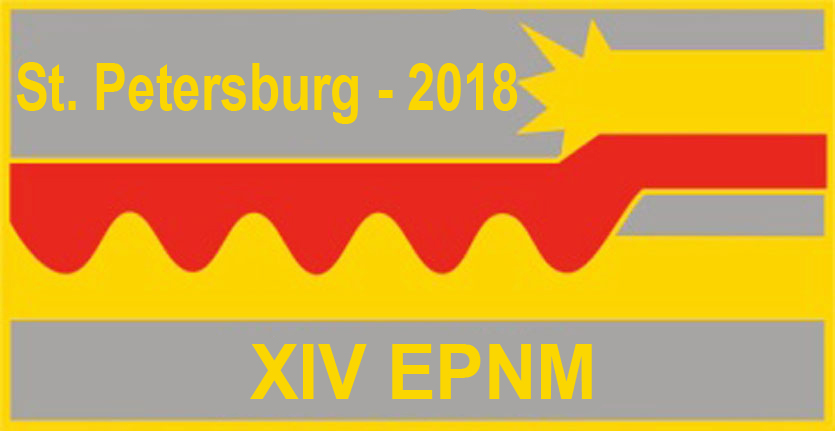About Saint-Peterburg
The venue of the symposium EPNM-2018 will be the Hotel "Saint-Petersburg" located in the historical part of the St. Petersburg city http://www.hotel-spb.com/hotel-spb-com.nsf/main/en.
Saint Petersburg is Russia's second-largest city after Moscow, with five million inhabitants in 2012. An important Russian port on the Baltic Sea, it has a status of a federal subject (a federal city).
Situated on the Neva River, at the head of the Gulf of Finland on the Baltic Sea, it was founded by Tsar Peter the Great on May 27, 1703. In 1914, the name was changed from Saint Petersburg to Petrograd, in 1924 to Leningrad, and in 1991 back to Saint Petersburg.
Between 1713 and 1728 and in 1732-1918, Saint Petersburg was the capital of imperial Russia. In 1918, the central government bodies moved to Moscow.
Saint Petersburg is one of the modern cities of Russia, as well as its cultural capital. The Historic Centre of Saint Petersburg and Related Groups of Monuments constitute a UNESCO World Heritage Site as an area with 36 historical architectural complexes and around 4000 outstanding individual monuments of architecture, history and culture. Saint Petersburg is home to The Hermitage, one of the largest art museums in the world.
The city has 221 museums, 2000 libraries, more than 80 theaters, 100 concert organizations, 45 galleries and exhibition halls, 62 cinemas and around 80 other cultural establishments. Every year the city hosts around 100 festivals and various competitions of art and culture, including more than 50 international ones.
The Russian Museum is a large museum devoted specifically to Russian fine art. The apartments of some famous Petersburgers, including Alexander Pushkin, Fyodor Dostoyevsky, Nikolai Rimsky-Korsakov, Feodor Chaliapin, Alexander Blok, Vladimir Nabokov, Anna Akhmatova, Mikhail Zoshchenko, Joseph Brodsky, as well as some palace and park ensembles of the southern suburbs and notable architectural monuments such as St. Isaac's Cathedral, have also been turned into public museums.
Among the city's more than fifty theatres is the world-famous Mariinsky Theatre (also known as the Kirov Theatre in the USSR), home to the Mariinsky Ballet company and opera. Leading ballet dancers, such as Vaslav Nijinsky, Anna Pavlova, Rudolph Nureyev, Mikhail Baryshnikov, Galina Ulanova and Natalia Makarova, were principal stars of the Mariinsky ballet.
The largest of the public higher education institutions is Saint Petersburg State University, enrolling approximately 32,000 undergraduate students; and the largest non-governmental higher education institutions is the Institute of International Economic Relations, Economics, and Law. Other famous universities are Saint Petersburg Polytechnic University, Herzen University, Saint Petersburg State University of Economics and Finance and Saint Petersburg Military Engineering-Technical University.
Many foreign consulates, international corporations, banks, and businesses have offices in Saint Petersburg.
Saint Petersburg has an extensive city-funded network of public transport (buses, trams, trolleybuses) and several hundred routes served by marshrutkas. Trams in Saint Petersburg used to be the main mean of transport; in the 1980s this was the largest tram network in the world, but many tracks were dismantled in the 2000s.
Saint Petersburg Metro underground rapid transit system was opened in 1955; it now has 5 lines with 67 stations, connecting all five railway terminals, and carrying 2.3 million passengers daily. Metro stations are often elaborately decorated with materials such as marble and bronze.
Saint Petersburg is served by Pulkovo International Airport, and also by three smaller commercial and cargo airports in the suburbs. Lappeenranta Airport, which is located near Saint Petersburg but on the Finnish side of the border is also popular among Russian travellers.
Pulkovo airport was opened to passengers as a small aerodrome in 1931. As of 2013, the Pulkovo airport, which handles over 12 million passengers annually, is the 3rd busiest in Russia after Moscow's Sheremetyevo (SVO) and Domodedovo (DMD). There is a regular rapid-bus connection (buses 39, 39E, K39) between Pulkovo airport and the Moskovskaya metro station as well as 24/7 taxi service.












